QuestionWe have a 5 month old very loving male springer spaniel. except when he takes something that not his, he hides with it for sometimes hours and if you try to take it off him he will growl bark and even bite severely. We try to keep things out of his reach but its not always possible. How has he learned this behavior, how do we deal with it at the time and how can we break the pattern? I would also add that he will actually eat some of the items e.g. a pen, and obviously this worries us for his future health.
AnswerThe key to most behavior problems is approaching things using the dog's natural instincts. Dogs see all the people and dogs in the household as a pack with each having their own rank in the pack and a top dog. Life is much easier if the 2 legged pack members outrank the 4 legged ones. You can learn to play the role of top dog by reading some books or going to a good obedience class. A good obedience class or book is about you being top dog, not about rewarding standard commands with a treat. Start at http://www.dogsbestfriend.com/ For more on being top dog, see http://www.dogbreedinfo.com./topdogrules.htm
A mousetrap is very effective in making a dog leave something alone. Most
dogs will stay away from anywhere they were surprised by a snap. The best
part is that it is not you that is correcting the dog. It works whether you
are around or not. The mousetrap is very patient and is always on task as
long as you reset it. Bitter Apple, a spray or cream, works well in some cases.
Better than mousetraps when you aren't around is the crate. Other dogs may
not be as bad as the young Labs I am plagued with. Still your house and dog
will be much safer with the dog in a crate when you are away. The dog may be
happier in its den than loose in the house. It relaxes, it feels safe in its
den. It rests, the body slows down reducing the need for water and relieving
its self. Dogs that have been crated all along do very well. Many of them
will rest in their crates even when the door is open. I think the plastic
ones give the dog more of a safe, enclosed den feeling. They are harder for
dogs to open too. Metal ones can be put in a corner or covered with
something the dog can't pull in and chew. Select a crate just big enough for the full grown dog to stretch out in.
Leave it some toys. Perhaps a Kong filled with peanut butter. Don't leave
anything in the crate the dog might chew up. It will do fine without even any
bedding. You will come home to a safe dog and a house you can enjoy.
Accidents and damaged possessions are the fault of whoever was watching the puppy. When you are watching it, immediately correct it as soon as it goes for anything except its own toys. In a quiet, but firm voice ''Bad dog, its name drop!''. Gently remove what ever and replace it with one of her toys, or if older, hold eye contact until the puppy drops it.
A dog that has not been crated since it was little, make take some work.
Start out just putting its toys and treats in the crate. Praise it for going
in. If you have been able to trust it with any bedding, put that in the crate.
Feed it in the crate. This is also an easy way to maintain order at feeding
time for more than one dog.
Use the crate only when you must I have a short length of chain fastened to
my computer desk. With more mats around the chair mat, this gives a place
where the puppy is with me, but about as controlled as in the crate, while
still allowing me to get some work done, or at least answer All Expert questions.
Be very careful about this. Pen fragments can cause digestive injuries. Not good for the rug either.

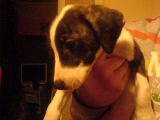 7 week old lurcher pup
Question
this is Lady
hi there me and my partner purch
7 week old lurcher pup
Question
this is Lady
hi there me and my partner purch
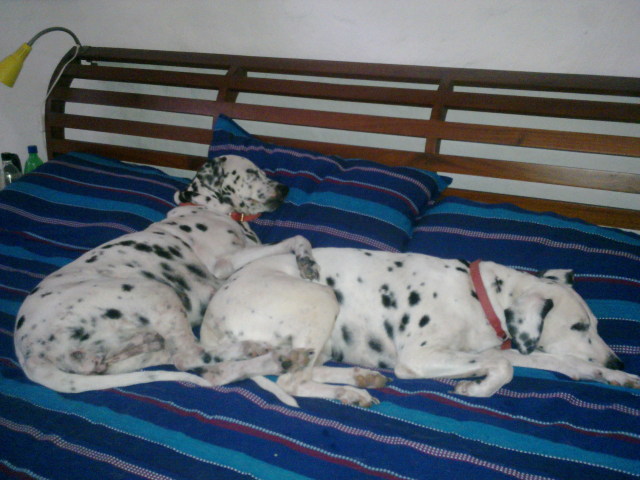 Sudden aggression towards mother dog
QuestionQUESTION: I have four dogs, Male German shepard
Sudden aggression towards mother dog
QuestionQUESTION: I have four dogs, Male German shepard
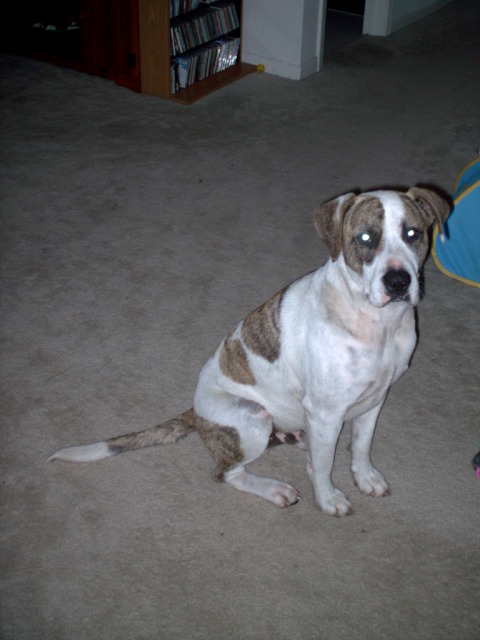 dog jumping fence
Question
dog
I have a 3 year old Staffordshire/Lab that
dog jumping fence
Question
dog
I have a 3 year old Staffordshire/Lab that
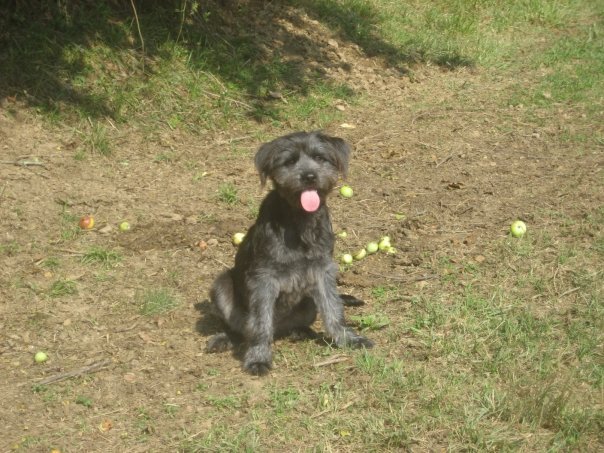 Help with my best friend :)
Question
cash
Hello!
&
Help with my best friend :)
Question
cash
Hello!
&
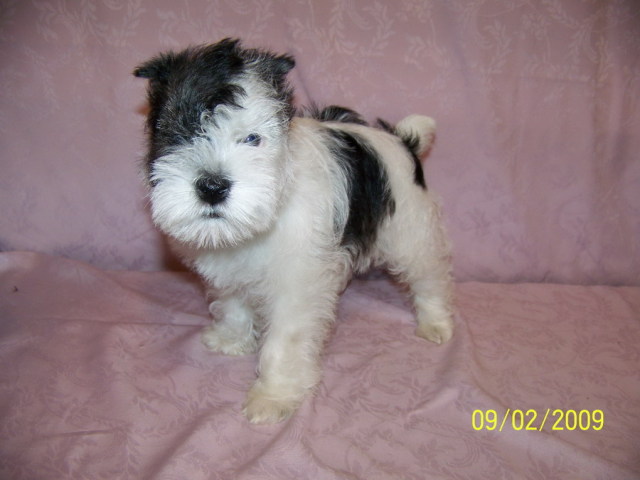 Eye problems w/ schnauzers
Question
Mini parti schnauzer
We currently have a 14 yr
Eye problems w/ schnauzers
Question
Mini parti schnauzer
We currently have a 14 yr